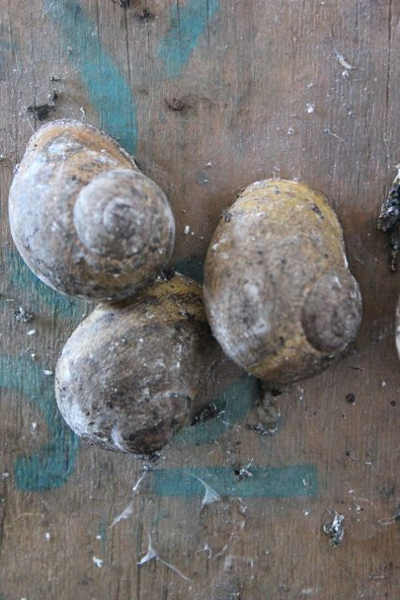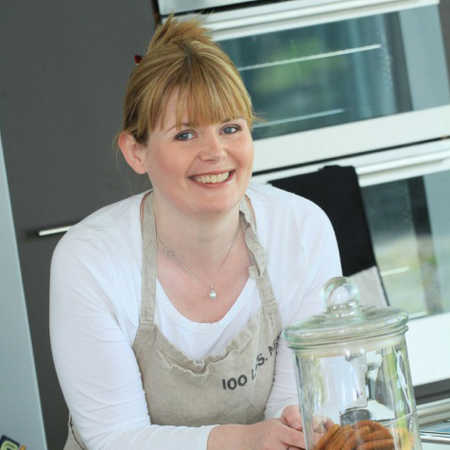Word from the West
 West of Ireland food writer Anne Marie Carroll introduces an unlikely new farm, right in the heart of Galway city
West of Ireland food writer Anne Marie Carroll introduces an unlikely new farm, right in the heart of Galway city
A group of snails can be referred to as a rout, escargatoire or a walk of snails. How fitting then, that a leafy courtyard on Galway’s famous ‘Long Walk' should be the romantic setting for Galway’s newest farm.
Dubbed the ‘chicken of the soil’ by snail devotees who love its low fat content, and traditionally thought of as continental delicacy particular to France, it seems snails are trailing their way across the Channel. The much maligned mollusc is suddenly a restaurant menu must-have.
Roasted snail shells have been found in archaeological excavations, an indication that snails have been eaten since prehistoric times. In several parts of the ancient world snails were eaten frequently.
The Romans, in particular, are known to have considered escargot as an elite food. Heliciculture, commonly known as snail farming, is the process of raising land snails specifically for human consumption, either to use their flesh as edible escargot, their eggs as a type of caviar, or more recently, to obtain snail slime for use in cosmetics.
It's no surprise that snails are related to other animals with an obvious shell, like clams, mussels and oysters, but they're also related to squid and octopuses. They all belong to a group of highly varied animals called molluscs. The first snail-like mollusc lived millions of years ago on the seafloor. Some moved onto land and began breathing with lungs instead of gills.
They found terrestrial life quite to their liking. Land snails now live just about everywhere from deserts to tropics, from sea level to mountain tops, and in all parts of the world with the exception of Antarctica, and who would want to live there? Living quiet lives under the cover of darkness, land snails have done well for themselves. Together with their water snail cousins, they are number two on the list of most species on earth, second only to insects.
One explanation for the much higher esteem in which they are held in Catholic countries such as France, Italy and Spain, is that in the days of regular religious fasting, snails were not classed as meat and could be eaten along with fish at those times.
Closer to home, snails are now resolutely on British menus. Heston Blumenthal famously makes a signature dish of snail porridge. But is there a market in Ireland for these delicacies? Eoin Coyle, a chef and native of the Long Walk certainly thinks so.
Ireland’s only other snail farm, Gaelic Escargot in Co Carlow, has been growing at a tremendous rate and plans to export tonnes of this European delicacy in the next few years. Demand in Italy averages around 194 million tonnes each year, while in France, it is 115 million tonnes. Neither country produces anywhere near enough to meet their own needs.
France in particular, the country synonymous with escargot, has to import most of its snails from Eastern Europe. The problem is moisture. Snails thrive in mild temperatures and damp environments, and so Galway, as famous for its plentiful rain as the Cote d’Azur is for its sunshine, must indeed be a snail farmers paradise.
 The development of the Galway snail has four cycles. The first is the mating and egg laying stage, which begins in February. Next comes the incubation and hatching of eggs. The infant snails then make their way to the surface of the soil in their specially adapted boxes. They spend weeks feasting on a mixture of fresh vegetables and a calcium supplement to develop to full size. Eoin describes them as having “the texture of abalone with a flavour of the forest floor”.
The development of the Galway snail has four cycles. The first is the mating and egg laying stage, which begins in February. Next comes the incubation and hatching of eggs. The infant snails then make their way to the surface of the soil in their specially adapted boxes. They spend weeks feasting on a mixture of fresh vegetables and a calcium supplement to develop to full size. Eoin describes them as having “the texture of abalone with a flavour of the forest floor”.
A newborn's shell size depends on the egg size, since the shell develops from the egg's surface membrane. As the snail grows, the shell is added on in increments. Eventually the shell will develop a flare or reinforcing lip at its opening.
This shows that the snail is now mature and there will be no further shell growth. Aged one week old, they weigh as little as 20mg each, but can be grown to 20g in five months, a 1,000-fold weight gain. From a farmer’s point of view, there is great productivity in snails.
For export, the snails are hibernated by dropping the temperature to less than 5 degrees celsius. While the Carlow snails are grown mainly for export, their Galway brethren have a different future in store. Eoin would like to develop a market for them in Ireland. Starting off with a small amount of breeders at the beginning of April - they expect to have their first edible crop of snails in October.
While Ireland’s appetite for escargot may be very much in its infancy, Galway has more than its fair share of progressive chefs who have already shown an interest in cooking with this new local ingredient. It is an area just waiting for local, fresh escargot to capitalise on Galway’s growing image as the food capital of Ireland. Escargot, it would seem, is catching on at more than a snail’s pace.
--
 Anne Marie Carroll is a freelance food writer and member of the Irish Food Writers’ Guild who lives in Galway with her husband and two children.
Anne Marie Carroll is a freelance food writer and member of the Irish Food Writers’ Guild who lives in Galway with her husband and two children.
With a background in design and illustration, Anne Marie made the switch to journalism with a regular food and wine column in The Galway Advertiser. Her work now mainly focuses on restaurant reviews, writing and editing recipes, the development of food photo shoots, including styling and photography. She also writes for a number of other publications and works as a consultant for small producers, food retailers and restaurants.
Anne Marie writes about all things food from the West of Ireland at her blog, Warm & Snug & Fat. You can also find her on twitter as @Biscuits4ABear






There are currently no comments
Leave a comment
Not a member? Register for your free membership now!
Or leave a comment by logging in with: